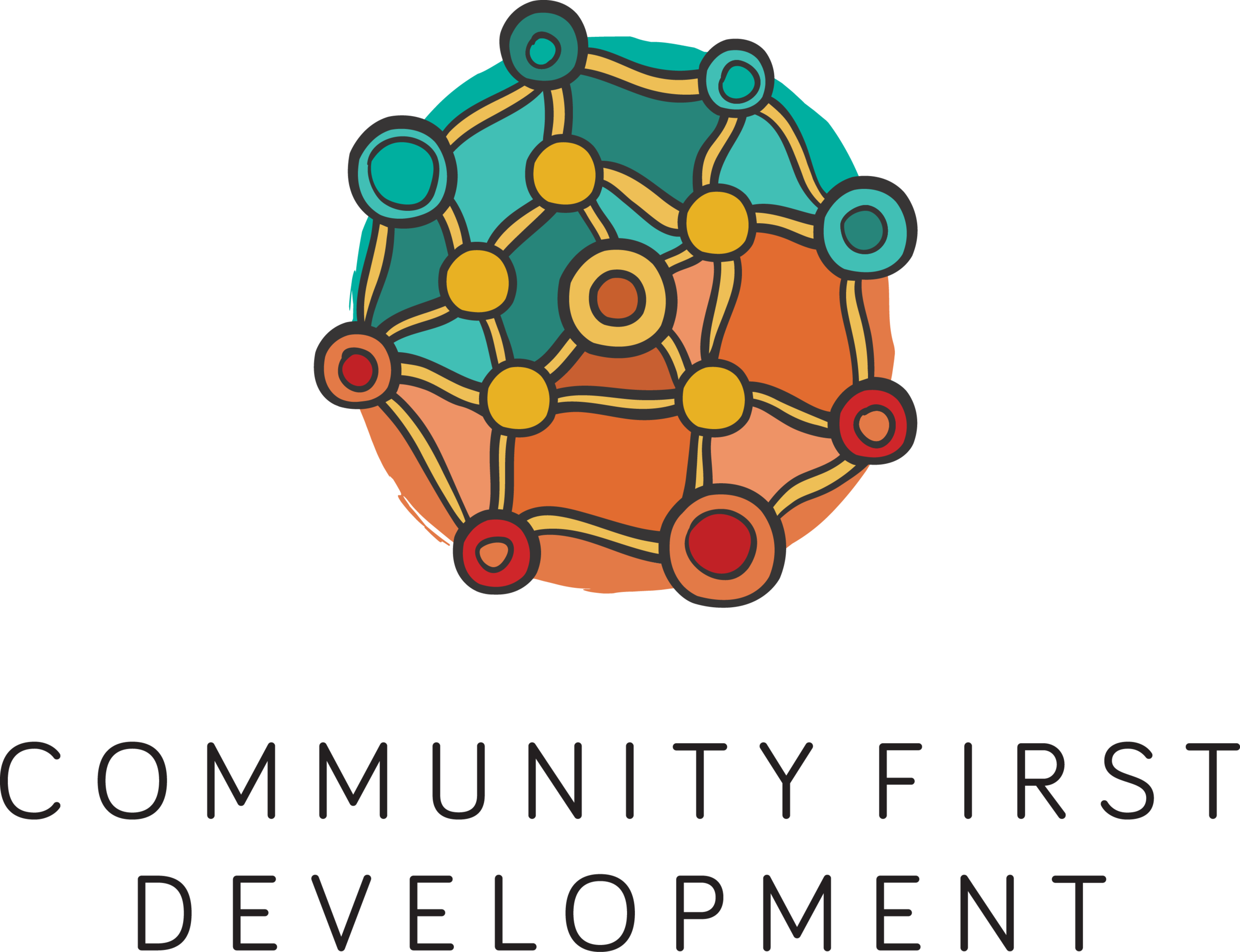Creation of a new Story of Change
Until recently, Community First Development had framed its work through a linear ‘Story of Change’, a program logic and visual representation of the social and economic impact the organisation achieves. Over the last few years, our First Nations staff have challenged the Story of Change’s linear approach and the assumption that strong governance is a short-term outcome that leads to longerterm outcomes. They explained that all outcomes are interconnected and that not one outcome is more important than another.
This feedback resulted in us creating a new circular Story of Change concept. The new concept emerged after multiple attempts and lots of yarning between our research and community development teams. Similar to an ecosystem, the new circular concept has a core (self-determination), organisms (the ‘outcomes’), and elements that contribute to the ecosystem flourishing (Community First Development’s people, approach and governance).
Previous Story of Change
New Story of Change
At the heart or core of this ecosystem is community ‘self-determination’. We see self-determination as the most important element to enabling communities to achieve their dream. Everything starts here. To put it simply, without a heart or core, the ecosystem cannot flourish.
Surrounding the heart or core are a range of outcomes that contribute to making a community stronger. All outcomes are interconnected and of equal importance, and all elements need to be strong for the ecosystem to flourish. Changing one element of the ecosystem impacts on other elements and the ecosystem’s overall function.
While all of the current outcomes have been revised to some extent, there have been a couple of significant changes. The ‘Increase in active reconciliation & understanding of Aboriginal & Torres Strait Islander cultures’ outcome aimed to highlight that reconciliation is an active, ongoing process that has elements of truth, justice, forgiveness, healing, reparation, and love. While our approach and values are the same, we discovered that the term ‘reconciliation’ means different things to different people and its use has generated significant discussion within the Community Development Team. As a result, we changed this outcome to ‘stronger cross-culture community’.
The ‘Greater community-owned evidence based influencing policy’ outcome aimed to show that communities’ recorded information about their development story (and theory) and outcomes achieved. We changed this outcome to ‘data sovereignty’, an important and increasingly referred to concept about the right of First Nations people to exercise ownership of their data. (Source) ‘Data sovereignty’ strengthens our existing outcome and aligns with developments in this area.
The new Story of Change concept also includes multiple arrows showing movement towards ‘self-determination’ and away from self-determination towards community led achievements’. They aim to demonstrate the multiple pathways within the ecosystem including how self-determination leads to stronger outcomes and therefore community led achievements; and how community led achievements strengthen self-determination.
It is envisaged that the revised circular Story of Change concept will provide a more accurate way for Community First Development to communicate how we work and the outcomes we contribute to achieving through our community development work.
It is also a different approach for evaluators and practitioners to think and yarn with First Nations people about program logic and theory.


